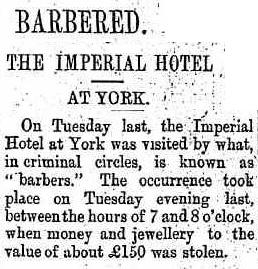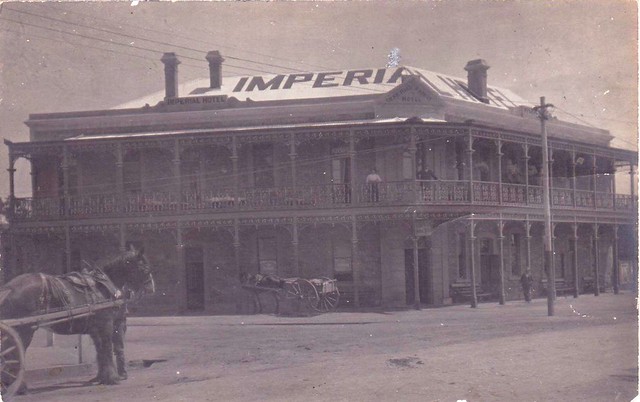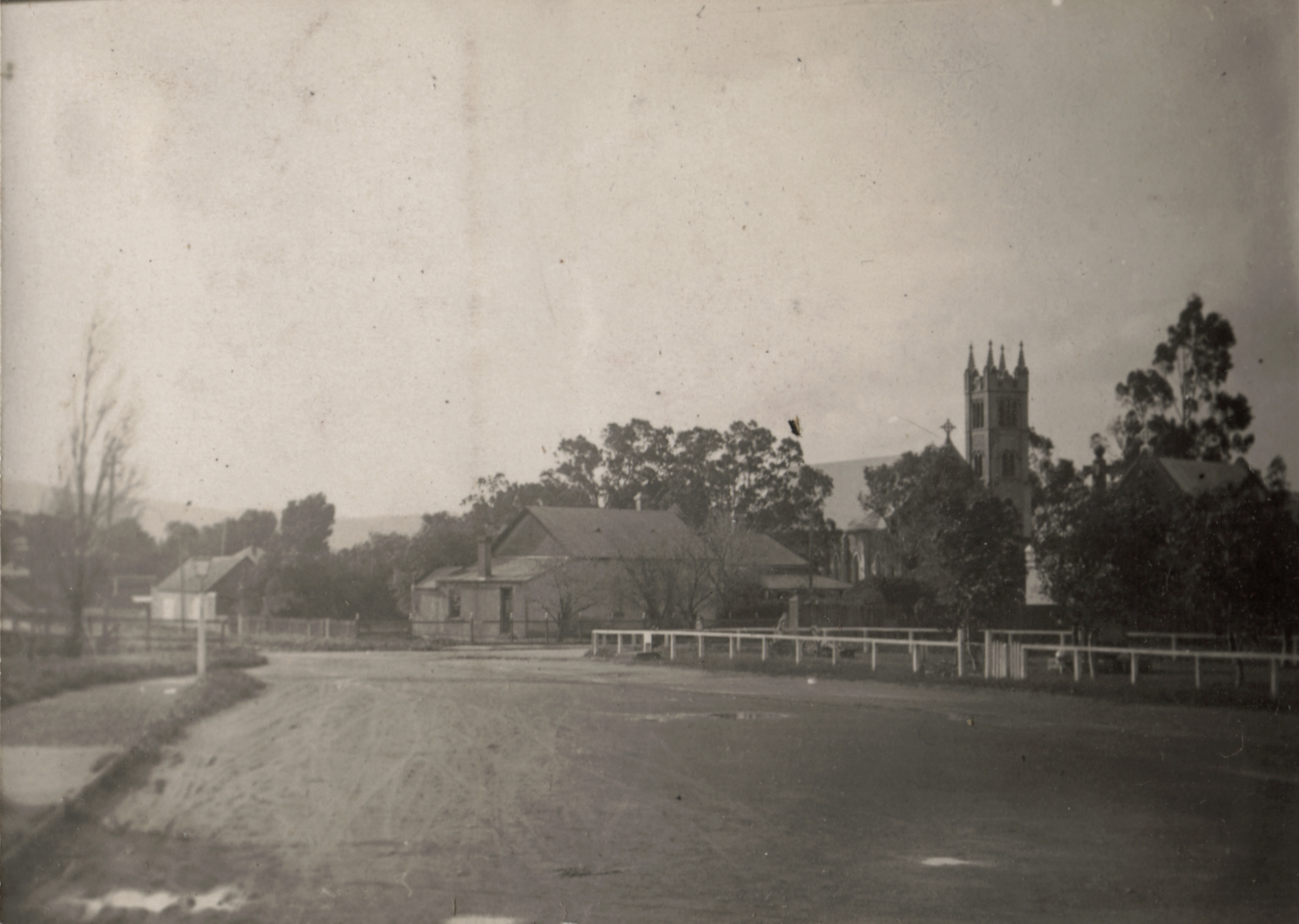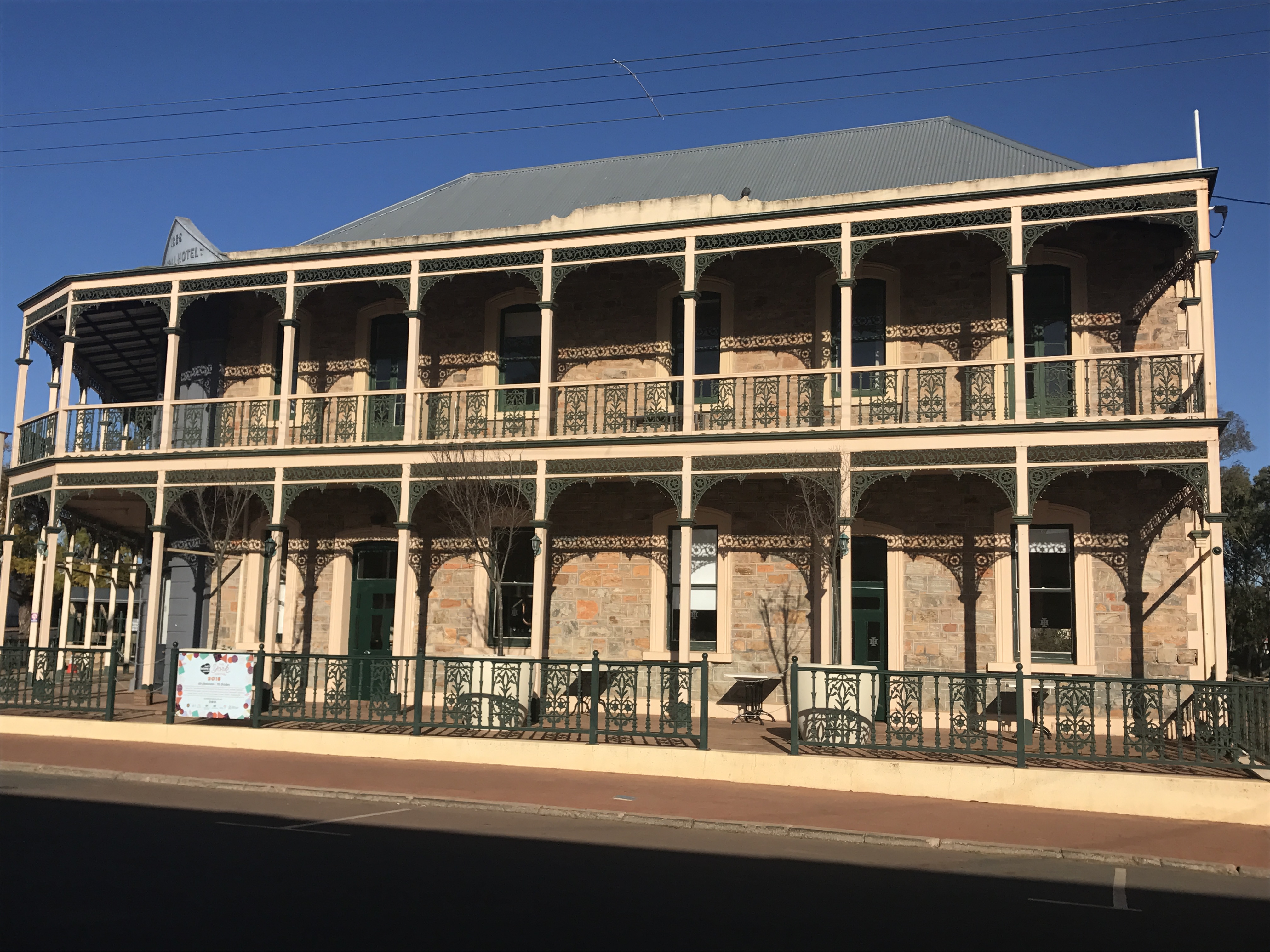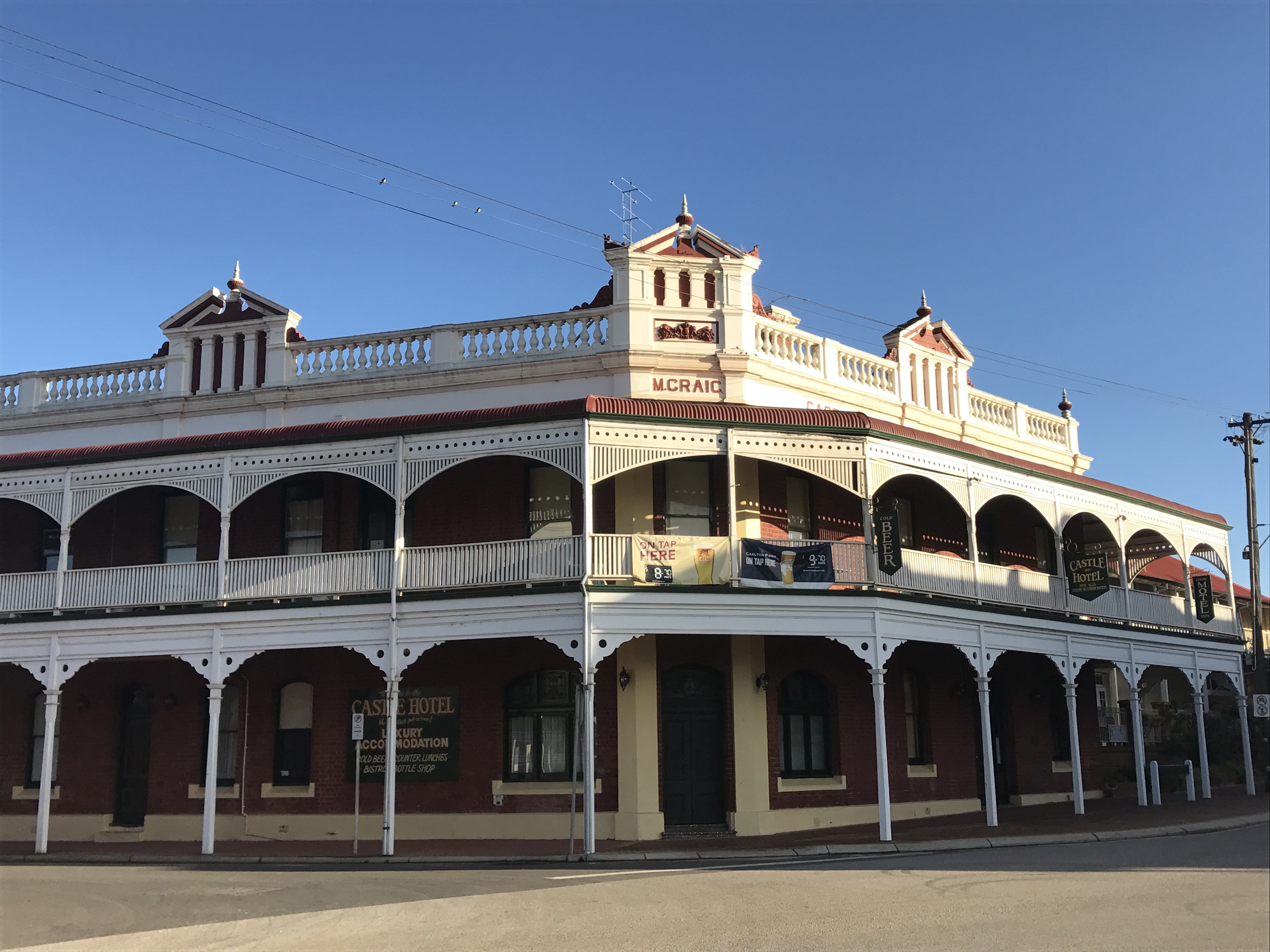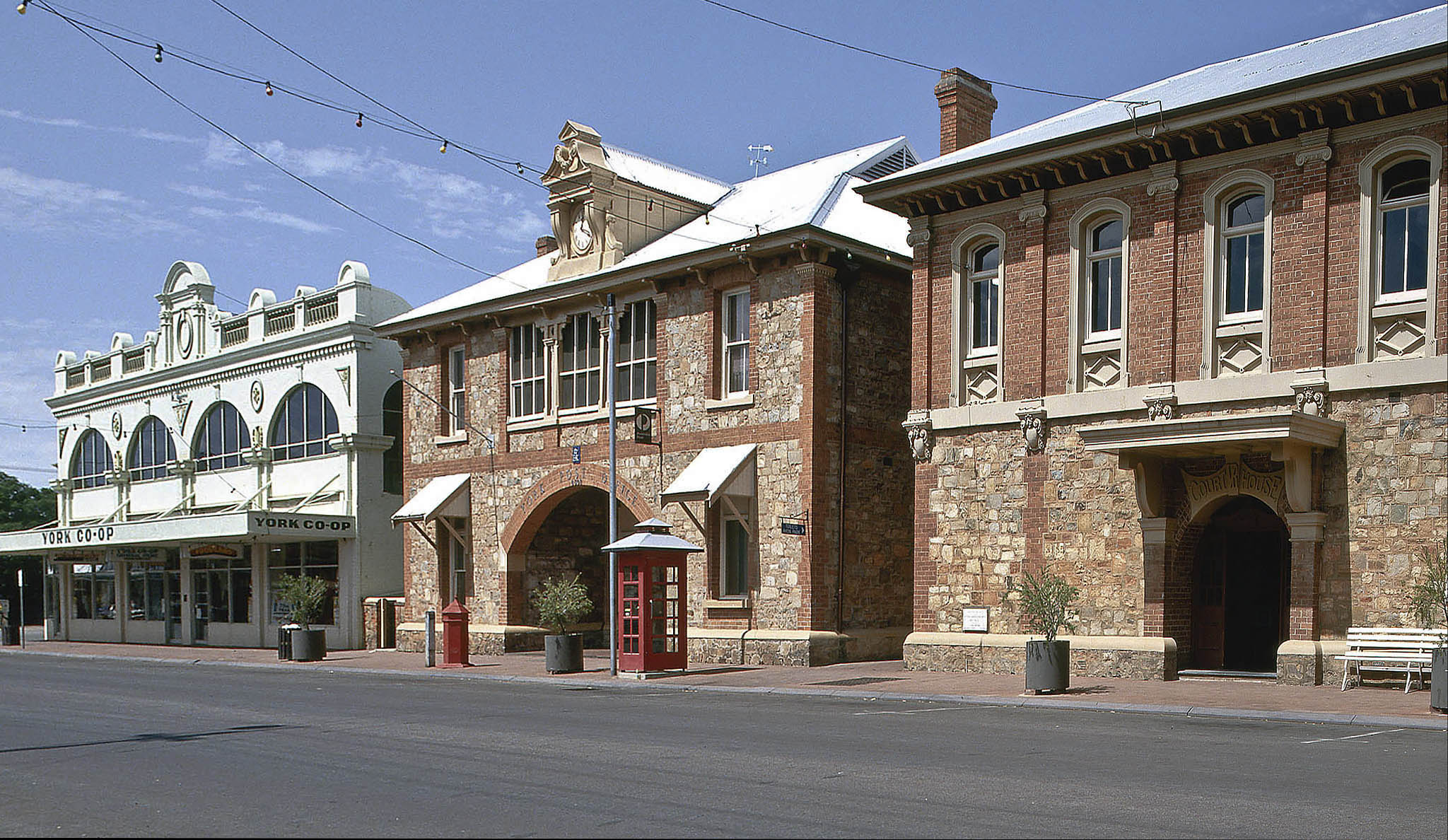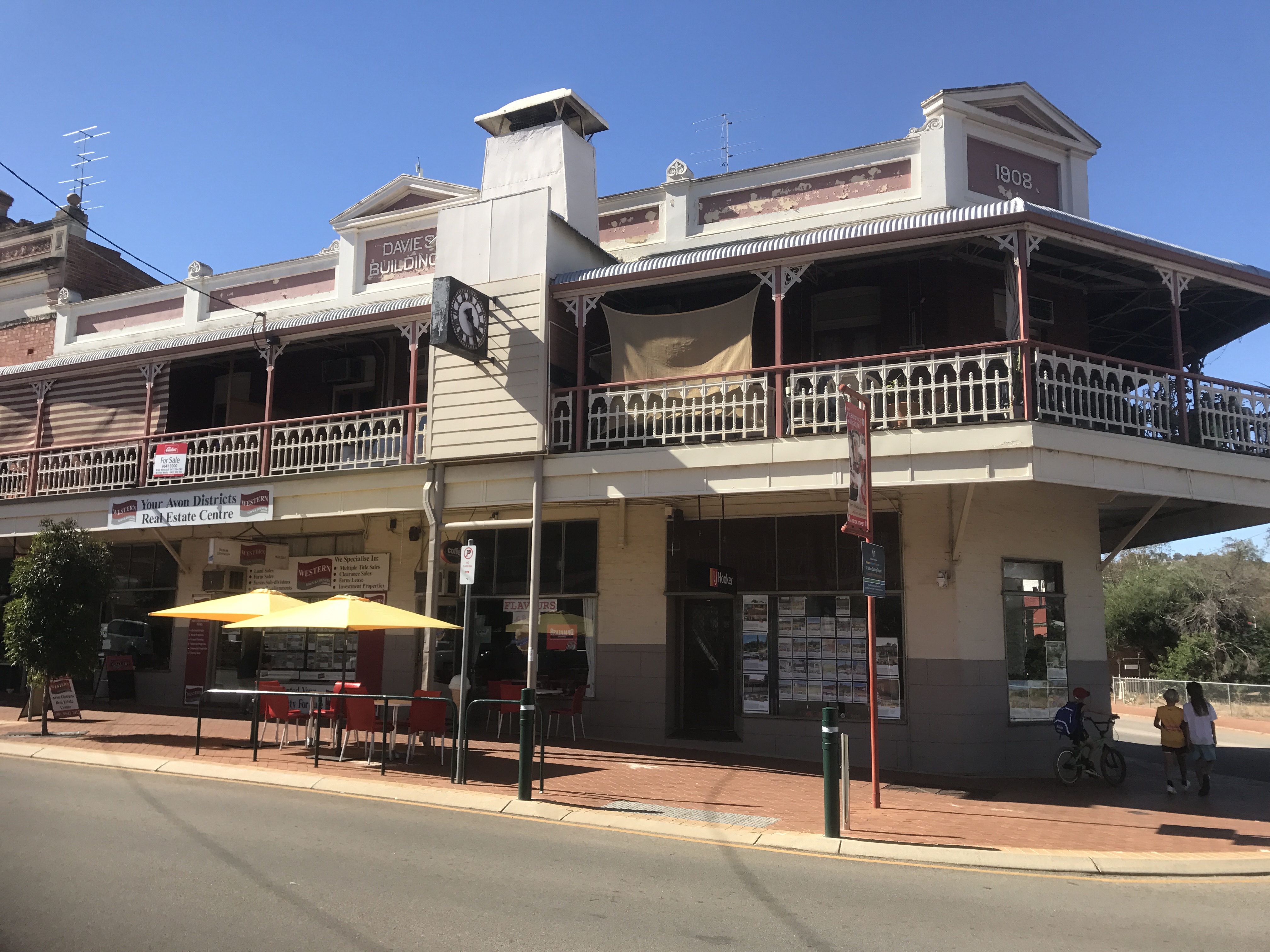Named after John Bowie Wilson, the colonies Minister for Lands, Mount Wilson is situated about 14 kilometres (8.7 miles) east of the township of Bell.
Gundungurra and Darug Aboriginal People
The Blue Mountains has been home to the Gundungurra and Darug Aboriginal peoples for thousands of years.
The Gundungurra people have a Dreamtime creation story about the Blue Mountains, which involves a fight between two ancestral creator spirits, one an eel-like creature called Gurangatch, and the other, a large quoll called Mirrangan. This battle, according to the ancient story, caused the scarring and shaping of the Blue Mountains landscape. (see here)
Around the Mt. Wilson area, grinding groves made by Aboriginal people sharpening their tools long ago can be found.
Possum skin cloaks were worn by the Aboriginal people of the Blue Mountains in the colder months for warmth, used as baby carriers, and to wrap around the body during sleep.
Turkish Bathouse
Mount Wilson was initially surveyed by W. R. Govett in 1833.
 |
| Aboriginal artifacts at the Blue Mountains Cultural Centre (2014) |
Turkish Bathouse
Mount Wilson was initially surveyed by W. R. Govett in 1833.
In 1867, George Bartley Bowen rediscovered the area, and after this, Mount Wilson was surveyed and subdivided in 1868 by Edward Sanford Wyndham of the Government Survey Department.
E.S. Wyndham, who was born in Dublin, became the first Mayor of Burwood, Sydney, in 1874. Wyndham had a grand vision to establish an English Park estate, with European-styled grand architecture, at Mount Wilson.
The very impressive Wynstay Estate, then known as "Yarrawa", was the first property to be established in Mt Wilson in 1875; a romantic vision complete with crenellated stone walls, hexagonal stone gatehouse, coach house and stables and amazingly, a Turkish bathhouse (circa 1880s).
The Turkish Bathhouse features late Victorian architecture, polychrome brickwork and Italianate details. It was built by Wyndham, as he was interested in natural therapies and the therapeutic benefits of Turkish Baths. Sadly, there is also a timber house falling into ruin on the property.
1870s
A newspaper from 1876 stated:"The mountain is reached from Sydney. Leaving by the
train at 9 a.m., the visitor is set down at 2.30 at a
platform lately erected by the Government at Bell's
line, about seven miles beyond Mount Victoria,
whence a leisurely ride or drive, as previously
arranged, will conduct to the first summit level of
the mountain, at from 4 to 5 p.m. This part of the
journey is amply repaid by the scenery en route. A
number of the proprietors of land on the mountain
contribute towards maintaining a bailiff on the
ground, and he has built for himself an hospice in
which he can accommodate three or four gentlemen
not indisposed to rough it. A mountain tea, with a
slice of pickled beef and delicious damper, followed
by a short ramble, leads to retirement for the night,..."
E.S. Wyndham, who was born in Dublin, became the first Mayor of Burwood, Sydney, in 1874. Wyndham had a grand vision to establish an English Park estate, with European-styled grand architecture, at Mount Wilson.
The very impressive Wynstay Estate, then known as "Yarrawa", was the first property to be established in Mt Wilson in 1875; a romantic vision complete with crenellated stone walls, hexagonal stone gatehouse, coach house and stables and amazingly, a Turkish bathhouse (circa 1880s).
The Turkish Bathhouse features late Victorian architecture, polychrome brickwork and Italianate details. It was built by Wyndham, as he was interested in natural therapies and the therapeutic benefits of Turkish Baths. Sadly, there is also a timber house falling into ruin on the property.
 |
| Richard Wynne built the Turkish Bath in the 1880s |
1870s
Zigzag Railway
After the decision was made to build the Zigzag Railway down into Lithgow Valley, via Mount Victoria, Mount Wilson no longer seemed to be such a remote a location.
In 1870, lithographs of Wyndham's plan were distributed, and 62 portions were available for purchase from the crown via an agent in Windsor. However, most of the land sales took place in 1875, when the Mount Wilson railway station opened near the present village of Bell.
After the decision was made to build the Zigzag Railway down into Lithgow Valley, via Mount Victoria, Mount Wilson no longer seemed to be such a remote a location.
In 1870, lithographs of Wyndham's plan were distributed, and 62 portions were available for purchase from the crown via an agent in Windsor. However, most of the land sales took place in 1875, when the Mount Wilson railway station opened near the present village of Bell.
 |
| The Great .Western Zig-Zag. NSW |
 |
| The view from the top viaduct of the Lithgow Zig Zag |
A newspaper from 1876 stated:
train at 9 a.m., the visitor is set down at 2.30 at a
platform lately erected by the Government at Bell's
line, about seven miles beyond Mount Victoria,
whence a leisurely ride or drive, as previously
arranged, will conduct to the first summit level of
the mountain, at from 4 to 5 p.m. This part of the
journey is amply repaid by the scenery en route. A
number of the proprietors of land on the mountain
contribute towards maintaining a bailiff on the
ground, and he has built for himself an hospice in
which he can accommodate three or four gentlemen
not indisposed to rough it. A mountain tea, with a
slice of pickled beef and delicious damper, followed
by a short ramble, leads to retirement for the night,..."
Herald (NSW : 1842 - 1954) 4 March 1876
1970s
Remote Location
Matthew Stephen of a famous legal family bought land at Mt Wilson and built a house called "Campanella", but it has completely disappeared. The present single-storey cottage of that name was built in the 1960s.
Jesse Gregson established the property "Yengo" between 1880 and 1919, with the dwelling built in stone. The Victorian Georgian residence of Edward Merewether was also built of stone. The property was called "Dennarque", built in 1879, was later run as a guest-house called "Wildflower Hall" in the 1930s.
The early purchasers of land at Mount Wilson did not intend to live at this remote location. But as they were mostly prominent and moneyed citizens from the world of business and politics, they saw the area as a retreat from the bustle of Sydney and the summer heat. Only a few of those 34 initial purchasers built houses on their land.
The early purchasers at Mount Wilson were mostly friends and associates. Such as Eccleston du Faur, who bought part of what is now called "Breenhold", where he built a wooden hut and entertained many friends, including the artist, William Piguenit, and the photographer Bischoff, and the Riverina squatter William Hay, who established "Nooroo" in 1880. Hay planted English oaks, chestnuts, ash and cedars, and the bulbs of bluebells, daffodils and crocus.
 |
| Mount Wilson in the Blue Mountains of Sydney. Du Faur's Cottage occupied by Lewis Thompson from 1875 to 1877 |
Jesse Gregson established the property "Yengo" between 1880 and 1919, with the dwelling built in stone. The Victorian Georgian residence of Edward Merewether was also built of stone. The property was called "Dennarque", built in 1879, was later run as a guest-house called "Wildflower Hall" in the 1930s.
 |
| Merewether Family, Dennarque. Merewether seated, wearing a hat, in front of open French window. Ref. Merewether Archives, Newcastle Public Library, no date |
The School
In 1897, the government surveyor, Charles Scrivener, surveyed Mt Irvine Road. In that same year, Scrivener returned with his son, Charles Passevile Scrivener, and his son's two friends, fellow graduates from Hawkesbury Agricultural College. The elder Scrivener wanted the area to be a national reserve. However, 400 hectares of land were released for sale, Scrivener's son and his two friends bought the first three grants. Scrivener, the elder, himself settled in Mt. Irvine after his retirement in 1915. Their families still live in Mt. Irvine today.
The Cox and White Families
Three grandsons of the William Cox, who is renown for building the first road over the Blue Mountains, were also among the first landholders at Mount Wilson. George Henry Cox, who was born in 1824, built "Beowang" (now called Withycombe), a substantial single-storey Late Victorian filigree house. The name "Beowang", chosen by Cox, is an Aboriginal word for the local tree ferns.
"Beowang" was purchased in 1921 by Mr & Mrs V. White, the parents of Nobel Prizewinning author Patrick White and the house's name changed to "Withycombe".
trickle of the creek. He taught me to unravel bush silence".
The White family moved back and forth between Mt. Wilson and their home near Rushcutters Bay, Sydney.
Sefton Hall was built for the rich, Sydney business owner, Henry Marcus Clark (1859-1913), in about 1912, as a summer retreat. Clake owned Marcus Clark & Co. chain of department stores, which he had established in 1883, bought this Mount Wilson property, then called "Balangra", from pastoralist James Dalrymple Cox in 1909. He renamed it "Sefton Hall" after the village of Sefton in Lancashire, England, where he had grown up.
1940s
In 1891, a school was built at Mount Wilson after George Cox, Edward Merewether and Matthew Stephen successfully petitioned the government for a school, with George Cox supplying the timber.
The schoolhouse was built on a small piece of crown land, though few children attended the school and it was closed for long periods. Colonel Wynne of the second generation, who owned Wynstay, opened a school around 1930, for his own three children and children of other residents, The public school then reopened in 1936 and finally closed in 1983.
The schoolhouse was built on a small piece of crown land, though few children attended the school and it was closed for long periods. Colonel Wynne of the second generation, who owned Wynstay, opened a school around 1930, for his own three children and children of other residents, The public school then reopened in 1936 and finally closed in 1983.
Mt Irvine
The Cox and White Families
Three grandsons of the William Cox, who is renown for building the first road over the Blue Mountains, were also among the first landholders at Mount Wilson. George Henry Cox, who was born in 1824, built "Beowang" (now called Withycombe), a substantial single-storey Late Victorian filigree house. The name "Beowang", chosen by Cox, is an Aboriginal word for the local tree ferns.
"Beowang" was purchased in 1921 by Mr & Mrs V. White, the parents of Nobel Prizewinning author Patrick White and the house's name changed to "Withycombe".
trickle of the creek. He taught me to unravel bush silence".
The White family moved back and forth between Mt. Wilson and their home near Rushcutters Bay, Sydney.
 |
| "Beowang" Mount Wilson, circa 1917. Blue Mountains Library |
 |
| Kirk's Cottage, Mount Wilson |
1900s
Sefton Hall
 |
| Drawing of Sefton Hall Built about1912 for the Sydney retailer Henry Marcus Clark (1859-1913) |
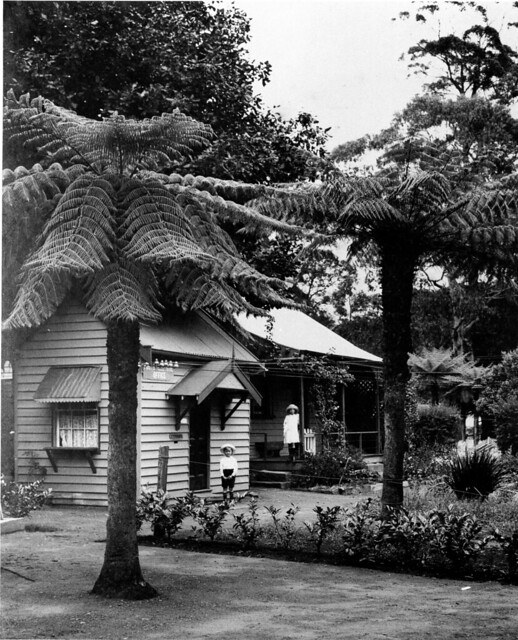 |
| Post Office, Mount Wilson, circa 1915. Blue Mountains Library |
 |
| On the Mt Wilson - Mt Irvine road 1915, Blue Mountains Library |
WWI
 |
| Lodge Gates of "Wynnestay," Monnt Wilson, NSW, Australian Town and Country Journal (Sydney, NSW : 1870 - 1919), Wednesday 26 March 1919 |
 |
| Charles Passfield Scrivener with his children, Mount Irvine, NSW, 1919. Blue Mountains Library |
1920s
 |
| Among, the Stately Tree -Ferns of Mlount Wilson, NSW, Sydney Mail (NSW : 1912 - 1938), Wednesday 16 May 1928 |
1930s
 |
| The new road from Kurrajong Heights (Bell's line of road) to Mt. Irvine and Mt.Wilson has just been completed, and is 12 miles in length. Sydney Mail (NSW : 1912 - 1938), Wednesday 16 January 1935 |
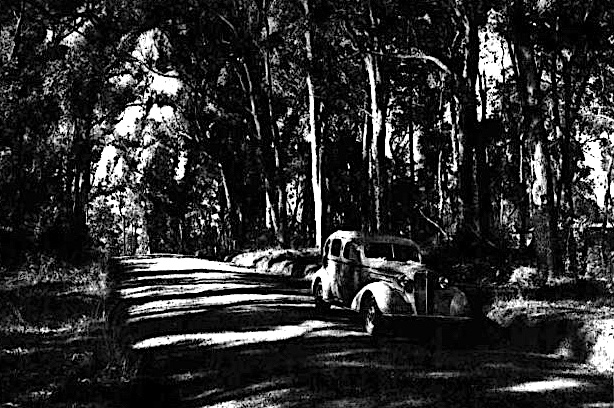 |
| The road to Mount Wilson, NSW, Sydney Mail (NSW : 1912 - 1938), Wednesday 11 May 1938 |
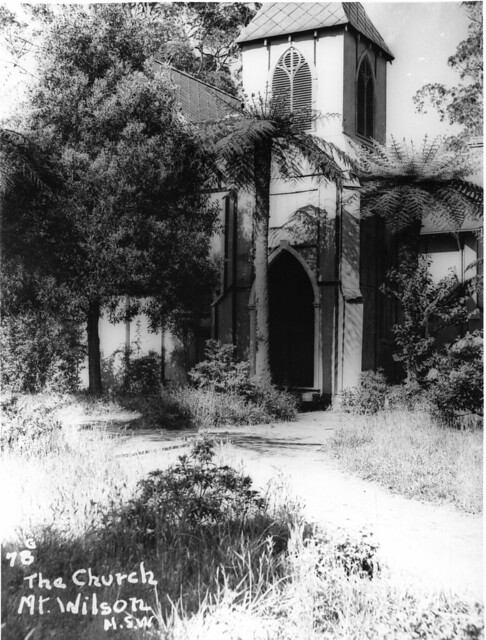 |
| The Church, Mt Wilson NSW (1938) Blue Mountains Library |
1940s
1950s
 |
| Sydney Morning Herald (NSW : 1842 - 1954), Friday 7 November 1952 |
1970s
The Nicholas and Carruthers Houses in Mount Irvine, was designed by Australian architect, Glenn Murcutt in 1977.
Mount Wilson is still a bit remote and you have to specially seek it out, but it is well worth the visit. While you might not find any shops, not even to buy coffee, you will find a picturesque town with majestic trees and surprising historic buildings. Take a picnic and if you travel there in the autumn, continue to Mount Irvine, where you will find several properties which open during March and April each year, for picking your own walnuts and chestnuts.
Mount Wilson is still a bit remote and you have to specially seek it out, but it is well worth the visit. While you might not find any shops, not even to buy coffee, you will find a picturesque town with majestic trees and surprising historic buildings. Take a picnic and if you travel there in the autumn, continue to Mount Irvine, where you will find several properties which open during March and April each year, for picking your own walnuts and chestnuts.
Around Mount Wilson
Things To Do and Places To Go
Wynstay
Turkish Bath Museum
Aboriginal Blue Mountains Walkabout
The Mt Wilson Village Walk
.jpg) |
| Breenhold Gardens, Mt Wilson, NSW |
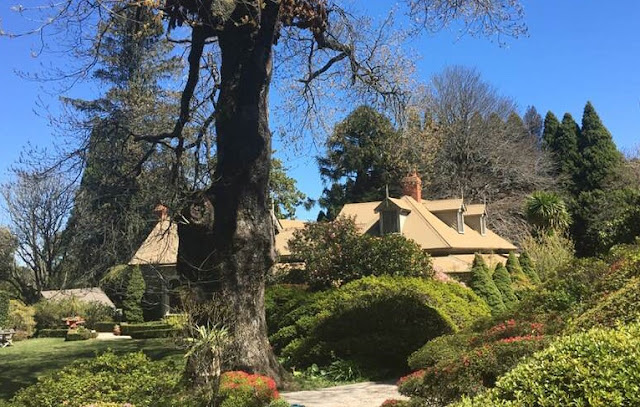 |
| Bebeah is one of the three Cox houses in Mount Wilson, NSW |
 |
| Chimney Cottage at Waterfall Road, Mt Wilson, built as a tea house in the 1920s |
 |
| Sefton Cottage contains part of James Cox's Balangra of 1882, Mt Wilson, NSW |
 |
| Richard Wynne built the Turkish Bath in the 1880s. MT Wilson, NSW |
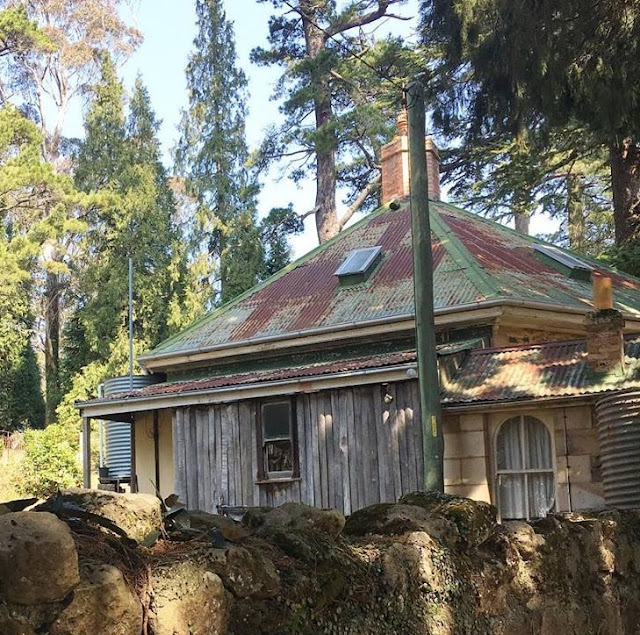 |
| Part of Wynstay Estate, constructed 1875-1893, MT Wilson, NSW |
 |
| Nooroo was built and planted in 1880 by William Hay, MT Wilson, NSW |
 |
| Yengo was first purchased by Jesse Gregson in 1877, Mt Wilson, NSW |
 |
| Breenhold was founded and created in the mid 1960s |
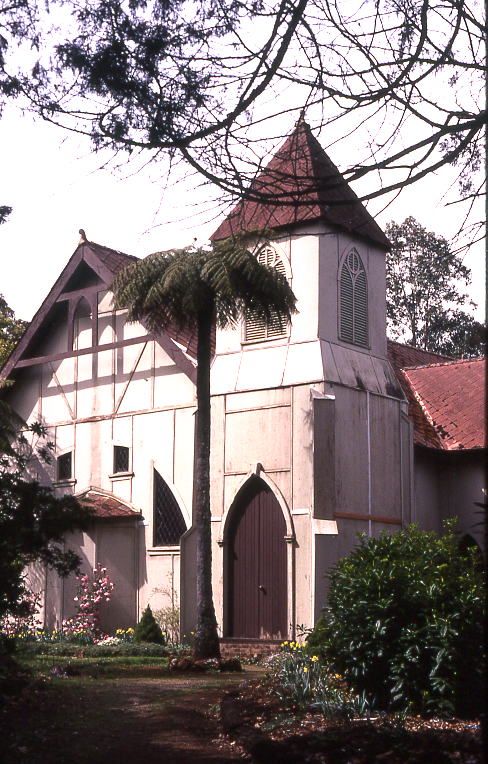 |
| St Georges Church was built in 1915 as a memorial to Henry Marcus Clark, Mt Wilson, NSW |
 |
| Bebeah is one of the original large garden estates of Mt Wilson, having been built by Edward Cox in 1880 |
 |
| Autumn scene at Mount Wilson, NSW |
 |
| Kookootonga Pick your chestnuts and walnuts |
.jpg) |
| Mt Wilson, NSW. Maksym Kozlenko |
 |
| Sefton Hall Built, Mt Wilson, about 1912, NSW |
 |
| The Post House, circa 1920s, Mount Wilson, NSW |
| Part of Wynstay Estate, Mount Wilson, NSW |
 |
| Gates, Wynstay Estate, Mount Wilson, NSW |
 |
| Breenhold Gardens, Autumn Mt Wilson, NSW. Maksym Kozlenko |
 |
| The Old School, Mt Wilson, NSW |
Things To Do and Places To Go
Wynstay
Turkish Bath Museum
The Mt Wilson Village Walk
How Gatsby stormed Mt Wilson
Breenhold Gardens
Kookootonga
Follow signs from 247 Mt Irvine Rd, Mt Irvine
Opening from 9th March 2019, 9am-4 pm, 7 days a week until late April
Nutwood Farm
22 Danes Way, Mt Irvine
Open from 9 am - 4pm on weekends plus public holidays from early March until mid-late April.
Campanella Cottage
2-10 Davies Lane, Mt Wilson Ph: 02 4756 2035
Weekends only from 9.00 am - 4.00 pm, generally from mid-March to mid-April
Fern Hill
52 The Avenue, Mt Wilson Ph: 02 4756 2008 or 0418 676 468
Chestnuts available from mid April to mid May.
Breenhold Gardens
Kookootonga
Follow signs from 247 Mt Irvine Rd, Mt Irvine
Opening from 9th March 2019, 9am-4 pm, 7 days a week until late April
Nutwood Farm
22 Danes Way, Mt Irvine
Open from 9 am - 4pm on weekends plus public holidays from early March until mid-late April.
Campanella Cottage
2-10 Davies Lane, Mt Wilson Ph: 02 4756 2035
Weekends only from 9.00 am - 4.00 pm, generally from mid-March to mid-April
Fern Hill
52 The Avenue, Mt Wilson Ph: 02 4756 2008 or 0418 676 468
Chestnuts available from mid April to mid May.













